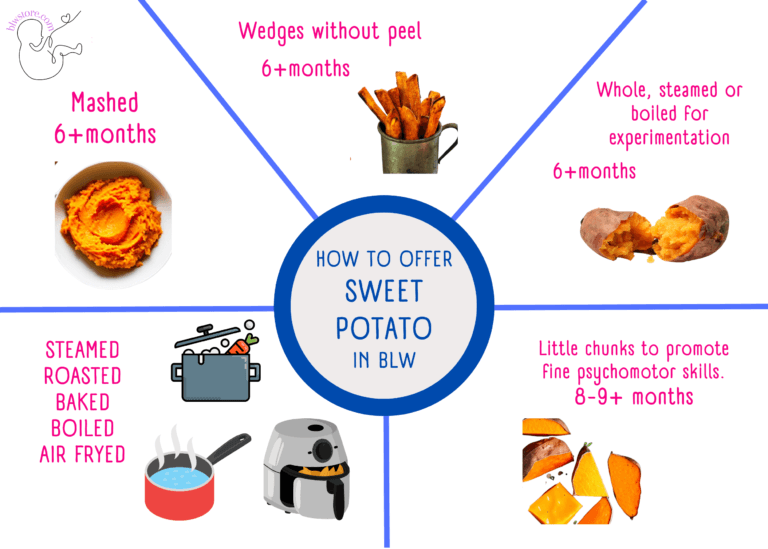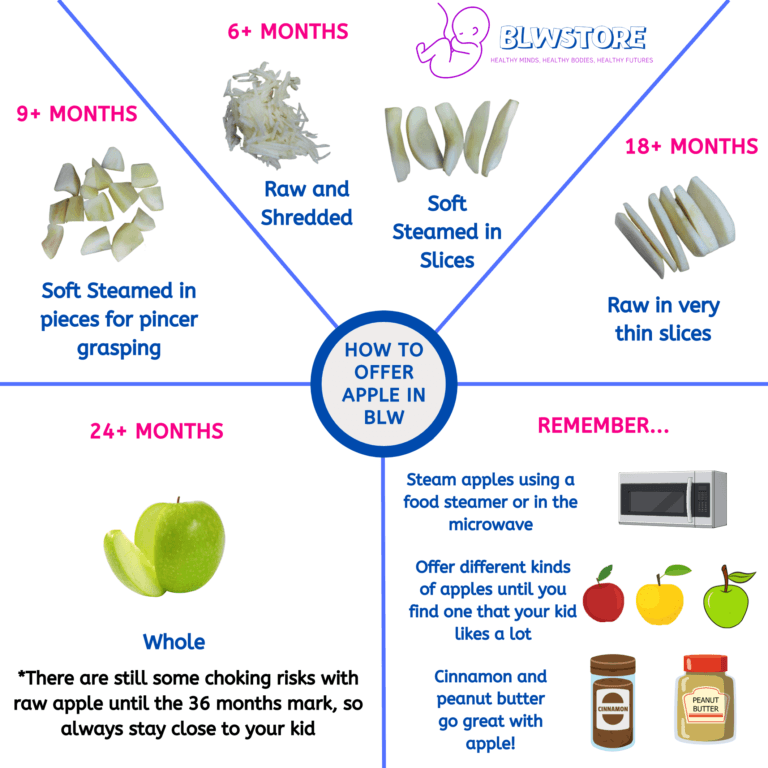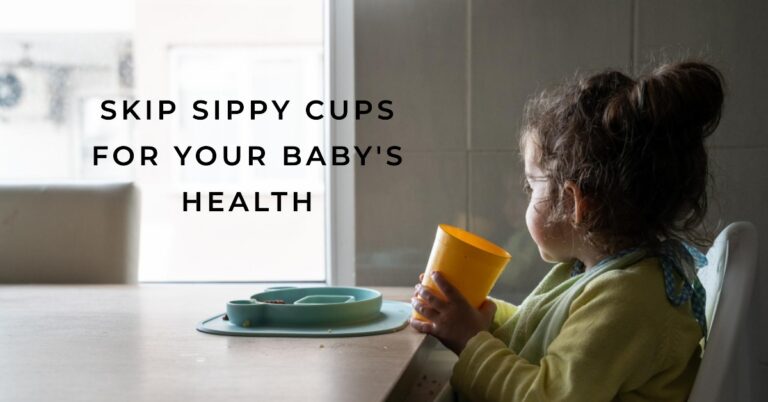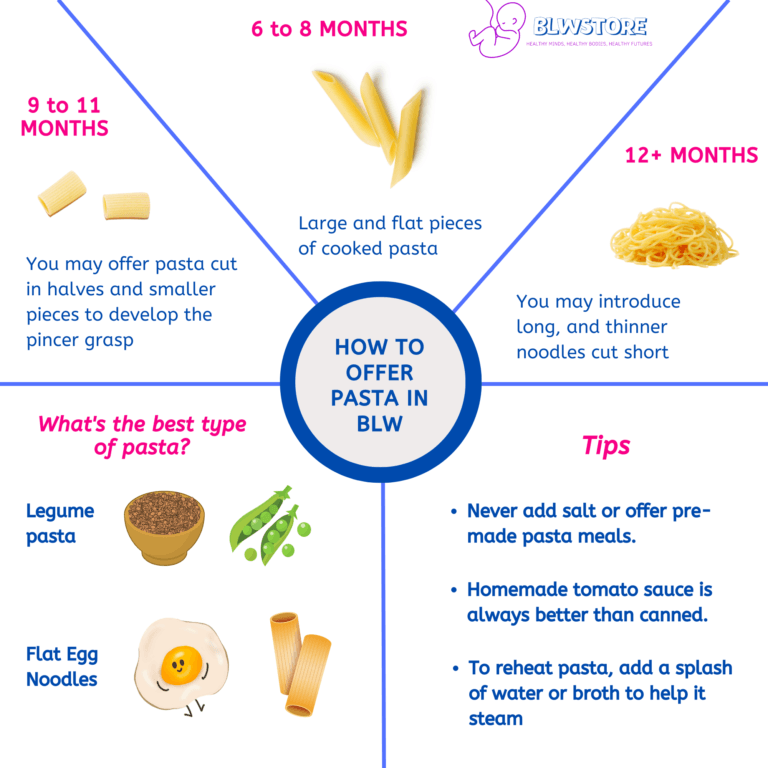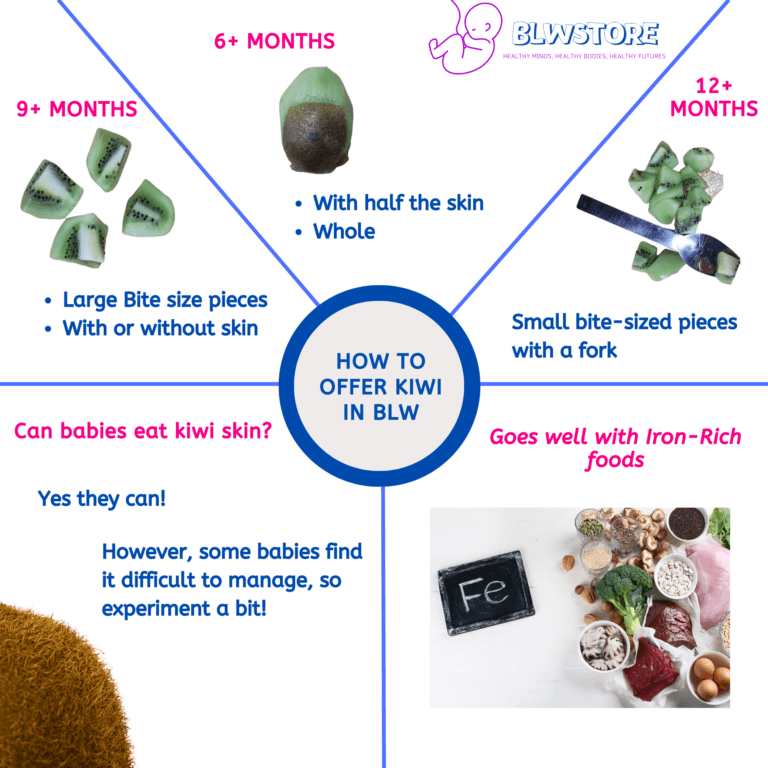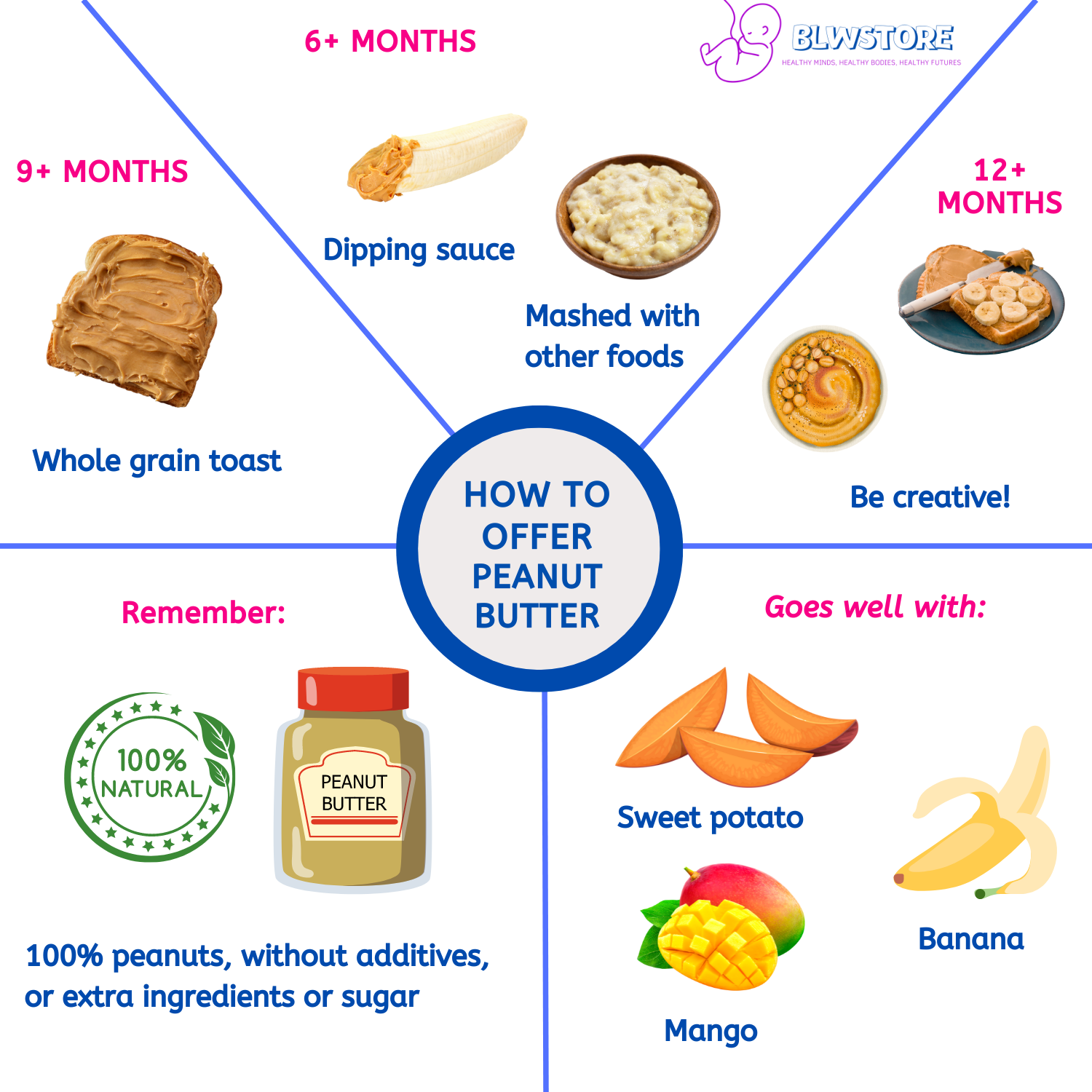
In your journey as a parent, food introduction is an exciting phase.
If you are wondering when to offer peanut butter, a nutritious and popular “nut” that’s technically a seed of the legume plant, you’ve come across the right article.
When to introduce it? How to serve it? How often should they have it? And what other foods can you combine with it for enhanced nutrition and taste?
We’ll walk through all these queries today.
Let’s get after it!
Our short answer and experience
Peanut butter is a caloric and very nutritious food. However, there are healthier fats such as extra virgin olive oil or avocado.
Although this food should not be abused for its high sodium content, it is a perfect complement for adding vegetable protein to children’s meals.
We started offering it spread on whole grain bread in small amounts, and once we saw that he had better chewing and swallowing control, we started offering it as a dip with fruit on his own.
Pablo loves it with apples and bananas mixed with his morning porridge. *He loves our overnight oats recipe.
When Can Babies Eat Peanut Butter?
As per pediatric recommendation, welcoming solid foods into your baby’s diet happens around six months of age, and this is typically the optimum time when peanut butter can be on their menu, too!
However, important disclaimers come along with this guideline.
First off — the type of peanut butter matters! For babies, we highly recommend choosing pure 100% peanut butter without any additives like sodium or sugar.
Give preference to brands that ensure non-genetically modified nuts for an even healthier option.
It’s not just about avoiding undesired ingredients; choosing genuine pure peanut butter offers higher nutrient density.
Remember, peanuts pack protein, healthy fats, and essential vitamins & minerals, making them perfect allies in promoting growth and brain development.
Also worth noting: if there is a family history of allergies (including eczema), consult your pediatrician before introducing peanuts or any other allergens into your baby’s diet. Medical advice always comes first for individual cases because each child’s immune response may differ from general guidelines.
The American Academy of Pediatrics (AAP) recommends those infants who are deemed high risk – i.e., who have severe eczema or an egg allergy – consult their health care provider before they start eating allergenic foods including peanuts ^source^
How To Offer Peanut Butter to your Baby
Introducing peanut butter should be a strategic and gradual process in your baby’s diet, factoring his or her individual age and developmental readiness. Here’s how you can break it down by months.
6-month-old babies:
Mix a small quantity of peanut butter (preferably organic and without additives) with another food they already enjoy, like mashed sweet potato or banana (we love this one). Let them scoop the food with their hands for added sensory experience. Another idea is soaking some peanut butter puffs in breast milk or formula and offering these on the tip of a spoon.
9-month-old babies:
At this stage, spread a thin layer of peanut butter on whole-grain toast or cut it into small pieces. You can dissolve it in water or non-dairy milk to make an easy sauce with whole-grain pasta.
12-months-old babies:
Most serving ideas from earlier stages still work now – but more independently! Your little one might now get excited about scooping up yogurt mixed with peanut butter themselves without forgetting the importance of ensuring small amounts are served at once.
How Often Can Babies Have Peanut Butter?
When Pablo turned 12 months, we started sharing our morning oatmeal topped off with a teaspoonful of pure crushed peanuts, i.e., good ol’ peanut butter, every day!
Before hitting the first birthday cake mark, introducing one teaspoon every other day was our guideline for faring well nutritionally without overwhelming their taste buds.
Remember: while this worked for us – as dear Pablo quite liked his PB-Oatmeal mix – each child is different! Monitor how yours responds both regarding liking the taste and any unusual physical reactions over time. In case peanuts are not received cheerily at first go by your munchkin: patience — try again after few than days; sometimes it’s all about gentle persistence!
Best Foods To Combine Peanut Butter With + Recipes
Introducing peanut butter to your baby shouldn’t mean a spoonful of it served solo. Mixing it up with other nutritious foods gets tastier and helps the absorption of nutrients more efficiently!
Here’s a collection of food combinations and simple recipes we recommend for minimal effort but maximum returns.
Fruit: Peanut butter and fruit can be an excellent combo, considering the fiber-filled package that fresh produce offers. A classic example is Peanut Butter Banana Spears or Bites. Just spread a thin layer of smooth PB on banana spears or slices.
Whole Grains: Adding PB to grains like oatmeal makes for satiating meals high in fiber and protein. One breakfast meal could be whole-grain toast topped with a thin layer of peanut butter, lightly mashed organic raspberries, and maybe even sprinkling some chia seeds!
Baby-friendly Hummus: This might sound unconventional, but replacing tahini with peanut butter in your favorite hummus recipe will give you an interesting alternative that still packs on the beneficial proteins.
Smoothies and Pasta Sauce: As odd as it may seem, introducing PB into these areas creates delightful nutrition-packed twists enjoyed even by adults! Add a spoonful to fruit-blend smoothies or mix it with warm water (and perhaps a splash of lime juice) to make a creamy pasta sauce.
Remember, less is more when starting new combinations while observing reactions closely during first trials.
After all — at this early age, their taste buds are explorers venturing into the fascinating world where peanuts meet oats, pancakes encounter bananas…so blend them well together for savory adventures meeting essential nutrition head-on!
We’re Maria and Alberto, a married couple and educators who are nutrition enthusiasts. Even before we had kids, we were already crazy about nutrition.
We’d read scientific articles, watch videos from nutritionists, and spend hours listening to nutrition podcasts.
Today, we continue doing this, but in a different way, as we’ve learned to sift through the noise and trends. Nutrition, like any other field of knowledge, the more you read and learn, the more you develop a comprehensive understanding of reality, and that’s what has happened to us.
Before having our first child, we focused on learning everything we could about child nutrition, using the same techniques we had already employed, backed by our extensive knowledge in nutrition.
Our mission is to help other parents with their children’s nutrition, to help them become the best versions of themselves.
If we are what we eat and drink, which is absolutely true, let’s do it right!


